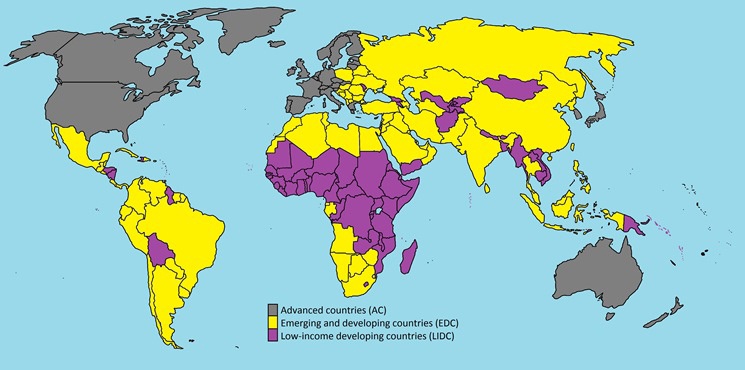Why ACs, EDCs and LIDCs?
16 September 2016
A big decision during the development of our new Geography qualifications was deciding on which development classifications should be used. We wanted to ensure that whatever classification we selected gave the most sensible breakdown of countries to meet the needs of the DfE subject criteria which we had to meet when producing the new specifications.
At one of our early GCSE ‘Development’ meetings, where the Geography subject specialists met with teachers, consultants and examiners to flesh out the content and begin creating our new specifications, we spent some time discussing what to use. We had to make sure that the classification was correct not just for the element of the content which focused on development but also worked for the cities part of the content – where there had to be study for one city in an economically advanced country and one city in a poorer or recently emerging economy. As the DfE content did not use the wording of any particular classification we had to do a little research to decide what would be the most appropriate.
During our research one of our Developers came across this article from the IMF. The article explains how classifications of countries based on their level of development are currently done and how it could be done. The article has a very useful table on pages 20 to 23 which lists the different countries in each classification for the IMF, UNDP and the World Bank. This gave us a great opportunity to compare the groups of countries for the different indicators.
We chose the IMF groupings of Advanced Countries (ACs), Emerging and Developing Countries (EDCs) and Low-income Developing Countries (LIDCs) as the groupings seemed most logical for the content we were creating in the specifications, due to their consideration of more than just economic indicators to separate the Advanced Countries from other groupings. Both the UNDP and the World Bank had countries such as Barbados, Kuwait, Qatar and the United Arab Emirates in their grouping of more developed countries, which the IMF did not. When considering ‘ways of life in cities’ we felt that the IMF gave a group of countries which was more logical for this content.
Once we had decided to use the IMF classification for the new GCSEs we decided that we must also use this classification at AS and A Level to ensure consistency between the different levels. So that’s why we chose to use the IMF classifications and here is a map showing the IMF classifications for each country:
